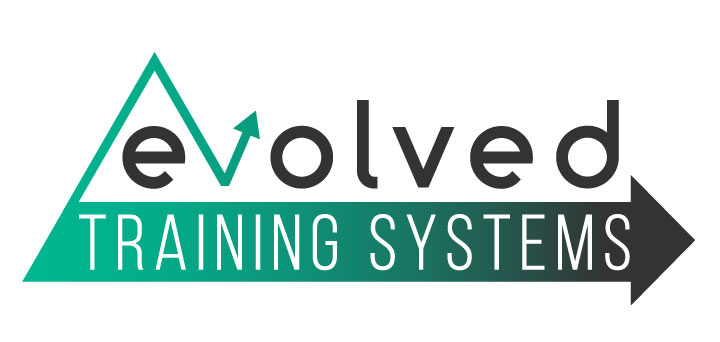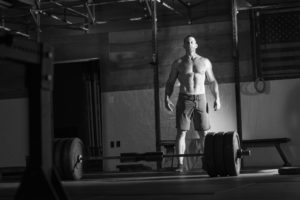The Compound-Isolation Supersets Cycle
The general philosophy applied to Evolved programming across the board can be seen in the blog about lengthened overload. The general principles discussed there will apply to this cycle, as well.
Beyond the general principles that apply broadly to all programming cycles, this current cycle is specifically programmed as a follow-up to the prior cycle.
In the prior “Pre-Exhaust supersets” cycle, we started repeating movement sequences with an isolation movement, which was then immediately followed by a compound movement.
An example would be a leg curl to an RDL, or a chest crossover to a Bench press type exercise.
This type of training is fantastic to elicit a metabolic response within the muscle tissue, but probably sub-optimal to maximize the hypertrophy (muscle growth) signal.
In general, these sequences in the prior cycle went from a “short overload” movement (one that is hardest at the contracted position) and then immediately into a “lengthened overload” movement (one that is most difficult at the stretched position of the muscle).
***In the blog linked at the top of this post, we discuss the difference between short and lengthened movements and why it matters. Make sure to check that out!***
This current cycle flips this around completely.
We will not be starting with the isolation movement.
But instead of supersetting each compound set with an isolation movement, (which would be called “Post-Exhaust,” and would be the opposite of last cycle), we will instead superset ONLY the final set of the compound with an isolation movement.
This approach allows us to get the most hypertrophic (and strength) adaptations from the big primary mover (compound exercise), and then still get the more acute and direct stimulus from the isolation movement afterward.
—
This style of training holds a special place in my heart and is full of nostalgia for some of my early training years.
Back in the late 90’s / early 2000’s, there was a training and nutrition system called “BODY FOR LIFE,” popularized by Bill Phillips.
The training portion of this system was built around this idea of completing multiple sets of a large compound movement, then supersetting the FINAL SET ONLY with an isolation movement.
In the BODY FOR LIFE program, the compound movement was completed with a descending rep scheme, such as 12-10-8-6 (increasing weight), and then supersetting the set of 6 reps with the isolation exercise.
I have modified this slightly, because I do not generally agree with the approach of pyramiding sets in this manner.
The main reason being that this approach means you will be semi-fatigued from the earlier sets, and it will inhibit maximal performance on the final set of the compound movement (i.e. you may only be able to complete 200 lbs for 6 reps if done as a pyramid but could do 200 x 8-10 reps if done without the prior fatigue from the pyramid sets).
Due to this aspect of fatigue, my thinking on has evolved, so that now I prefer to complete “warm-up sets” that are purposefully held quite shy of failure, but PREPARE the body for the heavier weights to come.
So instead of 12-10-8-6 then superset, our training will look more like:
2-3 warm-up sets, then:
2 work sets
+ Superset final work set with isolation movement
This approach also allows for two top work sets, where the 12-10-8-6 approach only allows for one top work set.
You can read more about my views on this here
Regardless of the precise manner by which we execute the ramp-up / warm-up sets, the general approach is sound.
Especially for hypertrophy (and even more specific to an intermediate training population), the use of compound movements as the PRIMARY movement makes the most sense.
This training program will prioritize these big movers COMPOUND movements, while still providing the stimulus from the isolation movement in a much more targeted manner.
Imagine you were doing a bench press style movement. Your triceps will often be the limiting factor in your ability to make another rep (and this often happens BEFORE the chest is fully fatigued).
By supersetting this Bench press set with a DB fly or crossover type movement, the chest will inevitably become the weak link in the sequence (and we can ensure that we sufficiently trained the chest to fatigue).
—
This general model and approach will apply ubiquitously across majority of repeating movements (except on Friday, “Day 4” which will focus more on straight sets).
Much like in prior cycles, the short and the lengthened movements will progress differently than the short movements.
Short movements (much less fatiguing) start much closer to failure, and eventually progress into a variety of intensity techniques described in the blog linked at the top.
The lengthened movements (more fatiguing) start further from failure, and eventually progress closer and closer to failure week to week.
Also remember that as the lengthened movement progress closer to failure week to week, this will mean you are carrying more fatigue into the isolation movement.
This means you don’t need to try and force progression for the second exercise. Even matching performance from prior week could be considered progress, given that you have more fatigue going into it.
However, we will continue to use partials and other intensity techniques on the SHORT movements, and therefore, we will often be “progressing the stimulus” without necessarily having to lift more weight or progress in the more typical manner (of adding weight or reps week to week).
Within the programming each week, there will be very specific details and descriptions of exactly how to implement these partials and intensity techniques to ensure you get the most stimulus (and muscle gain) from each!
This cycle will be THREE MESOCYCLES “blocks” of training, as is typical for the majority of Hypertrophy phases on the Evolved programs.




